The Archaeopteryx Exhibit at the Munich Mineral & Fossil Show
A bedazzling array of all ten specimens!
by Diana Fattori & Nando Musmarra
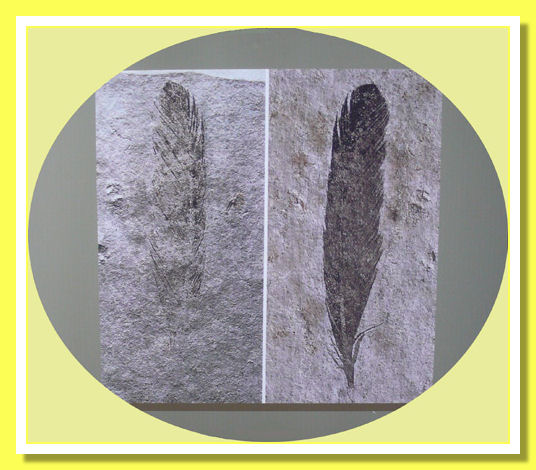
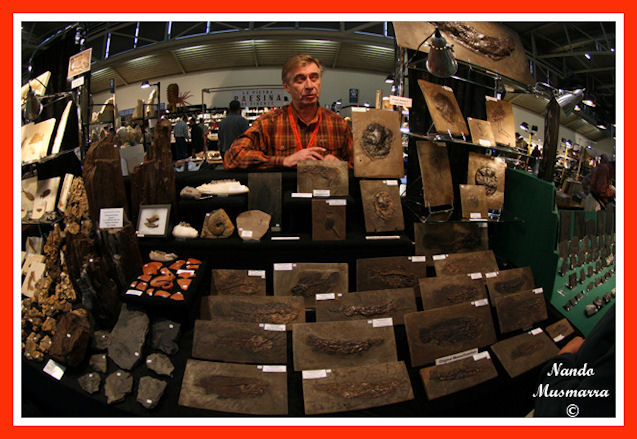
German vendor displaying Eocene fossils from Messel
I was hooked by the shiny, black Devonian Hunsrück marine invertebrates and the Eocene fossils from Messel, including both marine and terrestrial animals. The 2009 show's main attraction was the once-in-a-lifetime exhibit focusing on Archaeopteryx.
Archaeopteryx is the oldest known bird in the fossil record. It represents a transitional or connecting link between two groups of vertebrates: reptiles and birds. The numerous similarities between small theropods and Archaeopteryx convince most scientists that birds are simply a kind of dinosaur that learned to fly.
In the German language Archaeopteryx is called Urvogel, meaning primeval bird; it has a primitive skull, toothed maxilla, claws, a long tail, and feathers.
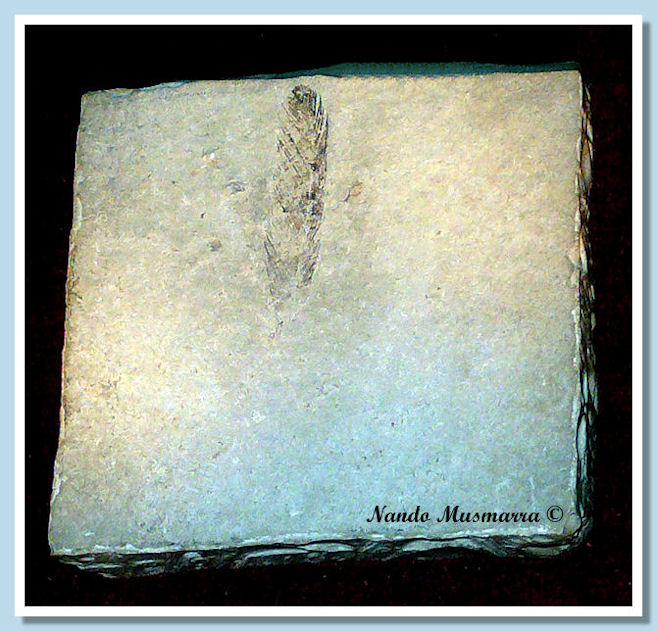
The feather (original specimen)
It is a very special and rare fossil. Just ten specimens plus one feather have been found so far, and all of them originated from the UpperJurassic lithographic limestone of Bavaria, in southern Germany.
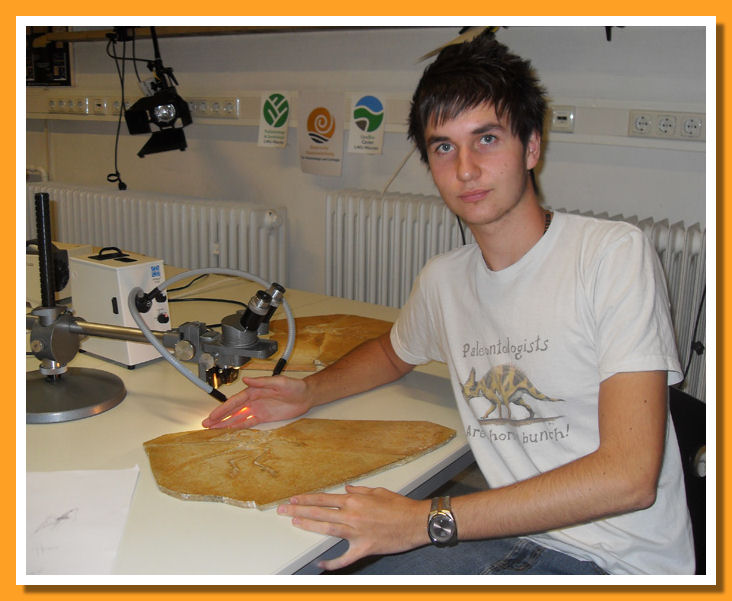
Dean Lomax working at Archaeopteryx n. 5 (original specimen) before Munich show - www.paleocritti.com -
During the Munich show, for the first time in history, six original specimens (from N.5 to N.10) and the counterslab of the single feather were on public display at the same time. To complete the exhibit, replica specimens from N.1 to N.4 were displayed as well.
Each Archaeopteryx was named after the locality hosting the specimen. Here follows a short story of each of the ten fossils.
In 1861 was found the very first fossil related to the famous primitive bird: a single feather of Archaeopteryx lithographica preserved on a slab and its counterslab. One is in the Munich Museum collection; the other is in the Berlin Museum.
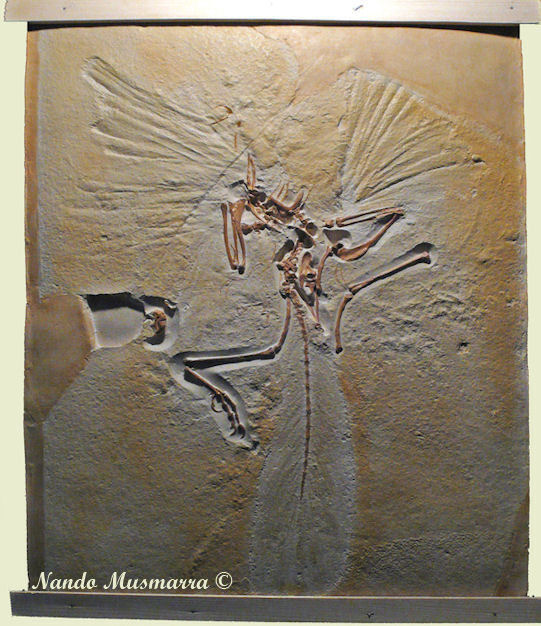
Archaeopteryx N.1, the London specimen (replica)
That same year, the first nearly-complete Archaeopteryx lithographica skeleton was found. While German paleontologists engaged in an argument about the nature of the enigmatic feathered reptile, Mr. Häberlein, owner of the specimen, sold it to the British Museum in London.
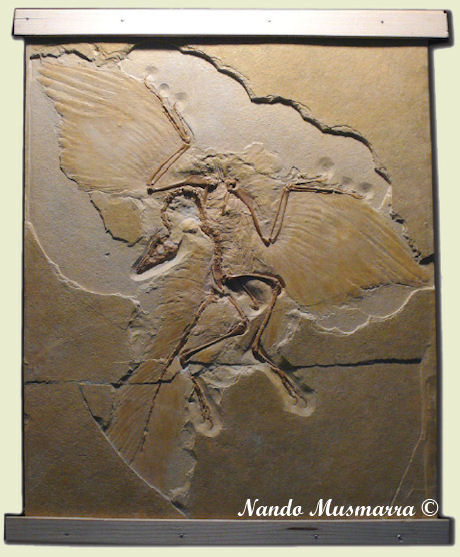
Archaeopteryx N.2 - The Berlin Specimen (replica)
In 1876 a second, almost-complete A. lithographica was found in the lithographic limestone in Bavaria. The owner of the specimen asked for an exorbitant price, but no museum was able to raise that amount of money. The Archaeopteryx N.2 was offered to the Peabody Museum at Yale University for $10,000, a sum equal to several million of today's dollars. After lengthy negotiations the Berlin Museum bought the fossil, so this Archaeopteryx didn't fly away from Germany.
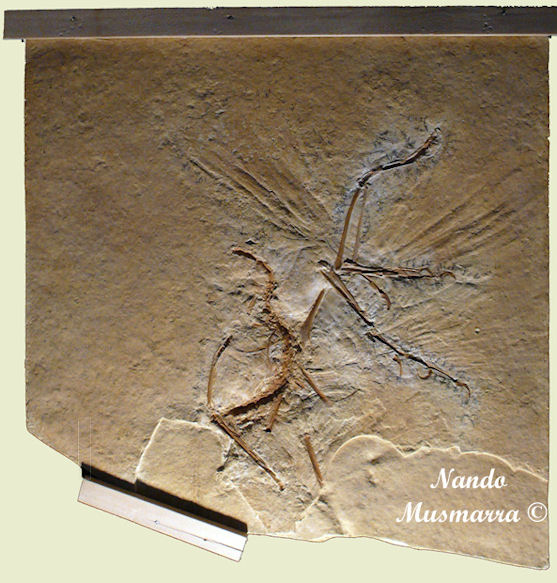
Archaeopteryx N.3, the Maxberg specimen (replica)
The Archaeopteryx lithographica N.3 is called the Maxberg specimen. It was found in 1956 in two slabs: the positive and negative counterparts, showing the incomplete remains of the skeleton. Since its discovery the fossil was exhibited at the Maxberg Museum in Solnhofen. Sadly, after its owner's death in 1992, the Maxberg specimen disappeared and it is still missing.
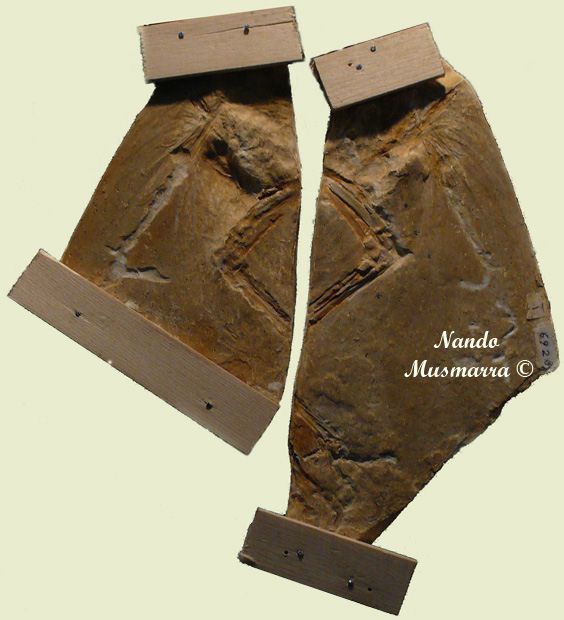
Archaeopteryx N.4 - The Haarlem specimen (replica)
Archaeopteryx N.4 is preserved in the Teyler Museum in Haarlem, a Dutch town very close to
Amsterdam. The specimen was bought by the Teyler Museum in the 19th century as part of an
acquisition of more than 12,000 different fossils from Solnhofen. No one noticed the treasure
hidden in the collection until 1970, when John Ostrom from Yale University visited the Teyler
Museum and correctly identified the incomplete fossil as Archaeopteryx lithographica.
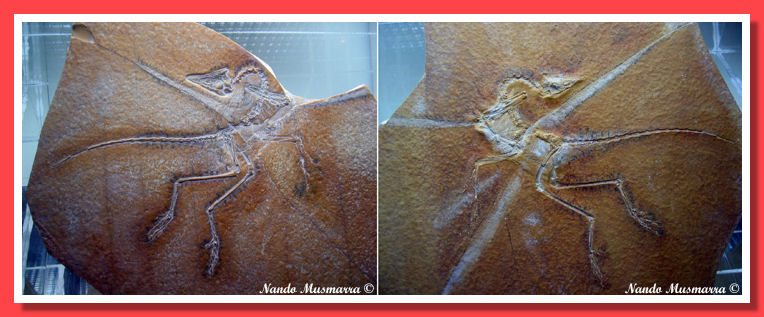
Archaeopteryx N.5, the Eichstätt specimen (original)
The fifth Archaeopteryx lithographica fossil was found near Eichstätt, a lovely town on the Altmühl River. It is an almost-complete skeleton on two slabs of irregular shapes. The specimen is exhibited in the Jura Museum in the Willibald castle overlooking the town of Eichstätt.
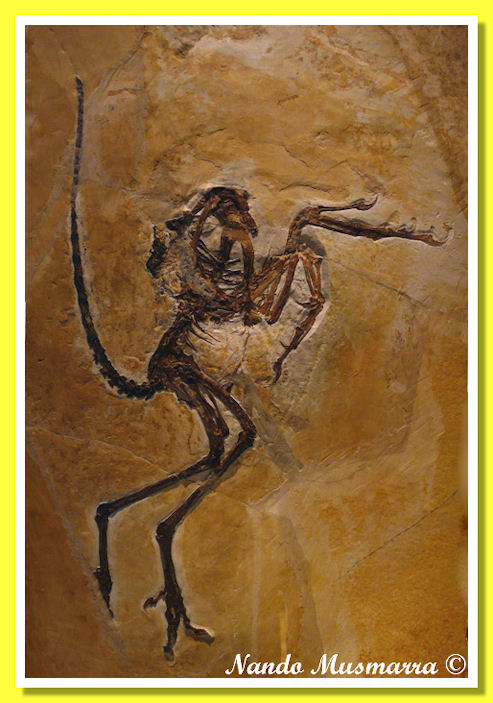
Archaeopteryx N.6, the Solnhofen specimen (original)
Archaeopteryx N.6 is on display at the Bürgermeister Müller Museum in Solnhofen. Nearly complete, this is the largest Archaeopteryx specimen known so ar. Before feather impressions were noticed, this fossil was considered to be Compsognathus (a small dinosaur), until Peter Wellnhofer, the foremost Archaeopteryx specialist, correctly identified it as A. lithographica in 1988.
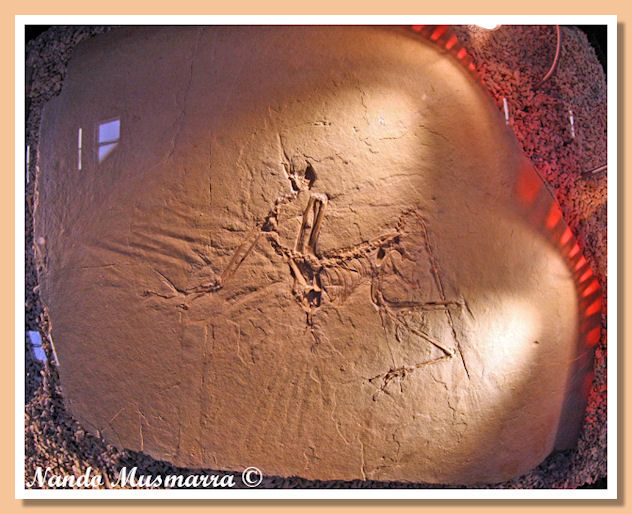
Archaeopteryx N.7, the Munich specimen (original)
Just found in 1992, Archaeopteryx N.7 is called the Munich specimen, because it resides at the Bavarian State Collection of Paleontology and Geology in Munich. The museum is old and charming, and has plenty of fossils with vintage tags. Archaeopteryx N.7 is a new species, A. bavarica Wellnhofer 1993, distinct from A. lithographica. It is a nearly-complete specimen with feather imprints on both the main and counter-slabs.
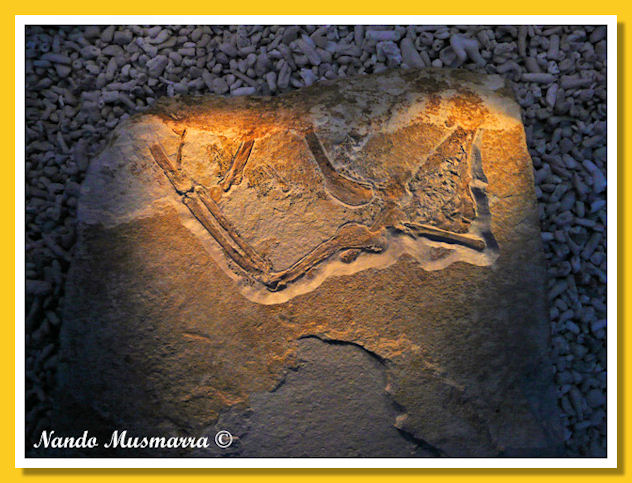
Archaeopteryx N.8, the Eight specimen (original)
The eighth specimen is a partial fossil found somewhere near Solnhofen. Belonging to a private collection, it was never scientifically investigated.
It is an interesting fossil because it originated from the Mörnsheim Formation, younger than the Solnhofen Formation from whence all the other Archaeopteryx come. It might be a new species, and has been kept in open nomenclature as Archaeopteryx sp.
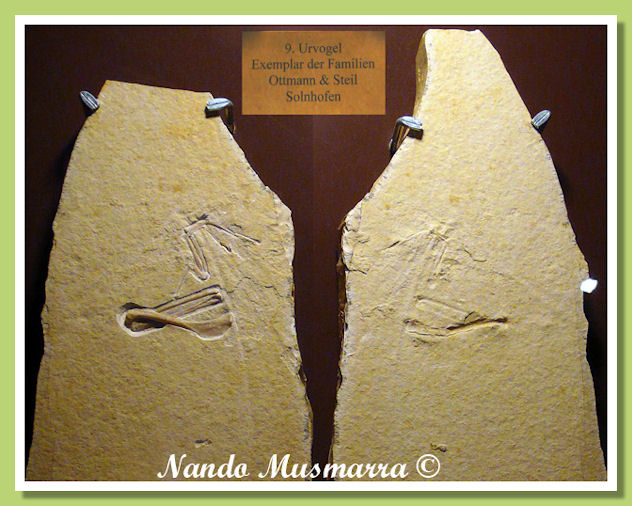
Archaeopteryx N.9, the Ottmann & Steil families specimen (original)
Found in 2004, the ninth specimen is the famous "chicken wing": the fossil consists of one isolated right wing on main and counterpart slabs with feather imprints preserved. N.9 is called the Specimen of Families Ottmann and Steil, Solnhofen, from the name of its owner. Like the Solnhofen specimen, this Archaeopteryx lithographica is also in the Bürgermeister Müller Museum collection.
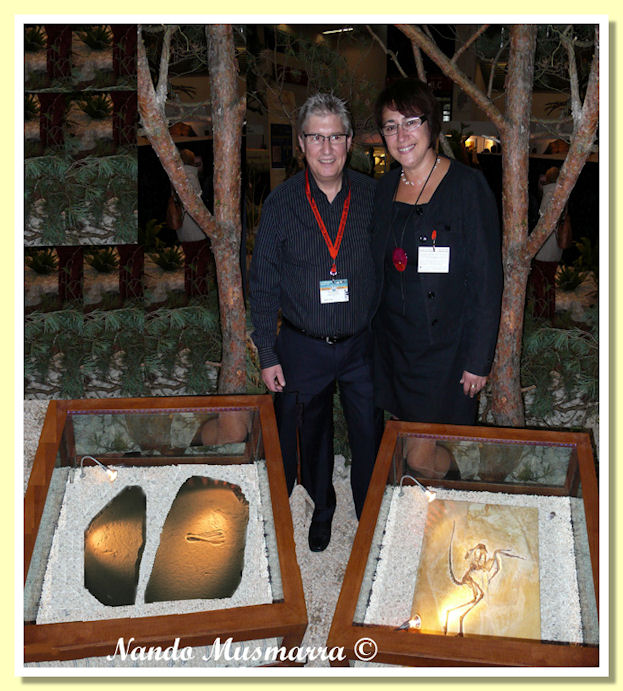
Smiling on the left there is Martin Röper, Bürgermeister Müller Museum director. Martin is the only man in the world who can say "Hey Baby, Want to See My Archaeopteryx Collection?"
The last Archaeopteryx found so far is the tenth specimen, also called the Thermopolis specimen. It is privately owned and deposited on a long-term loan in the Wyoming Dinosaur Center in Thermopolis, Wyoming. This is the only Archaeopteryx holding a Visa as a permanent American resident!
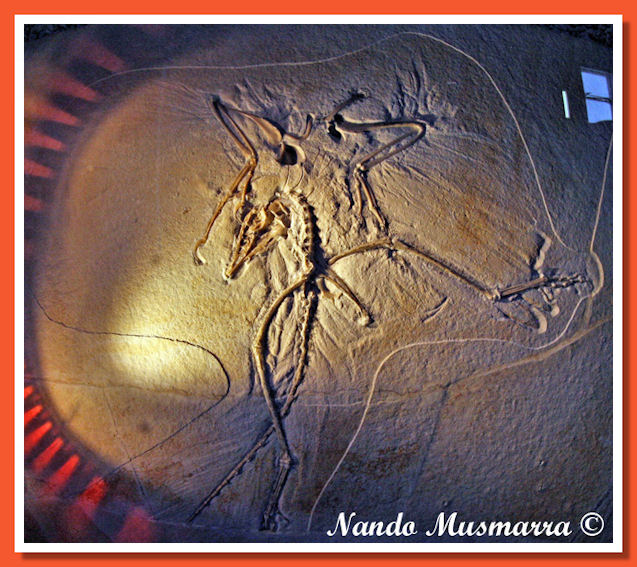
Archaeopteryx N.10, the Thermopolis specimen (original)
The Thermopolis specimen competes with the Berlin specimen for the title of the most beautiful Archaeopteryx yet found. N.10 is an almost-complete skeleton on a single slab, lying on its stomach in a road-kill posture. The skull is one of the best-preserved, and the only skull displaying its dorsal surface, exhibiting details unknown in the other specimens. The wings and the tail impressions are finely preserved. Like the specimen N.7, also the Thermopolis specimen is identified as Archaeopteryx bavarica.
After the three-day special exhibit in Munich, each Archaeopteryx went back to its home museum. Now if you wish to see those beautiful fossils, you will need to travel around the world: from London, England, to Thermopolis, Wyoming, passing through the Netherlands and four German cities along the way...
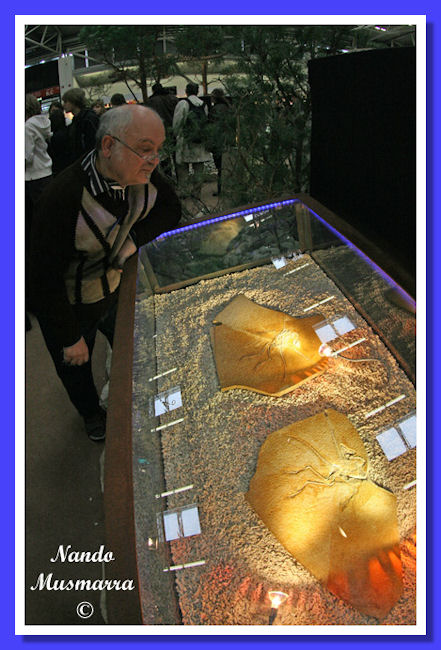
Pino Volk-Costantini, one of the finest German preparators,
looking at his creature, Archaeopteryx N.5
Diana Fattori & Nando Musmarra ©
This article was published in Fossil News April 2010.
